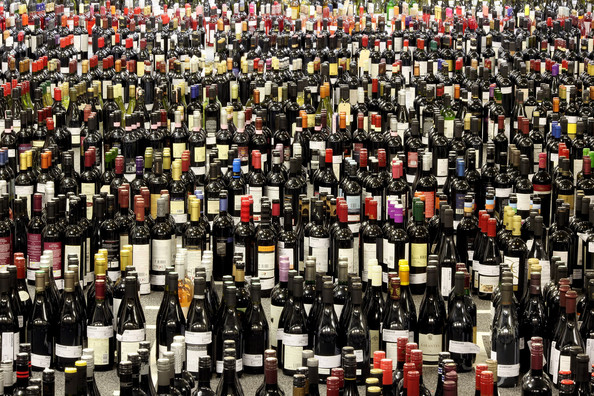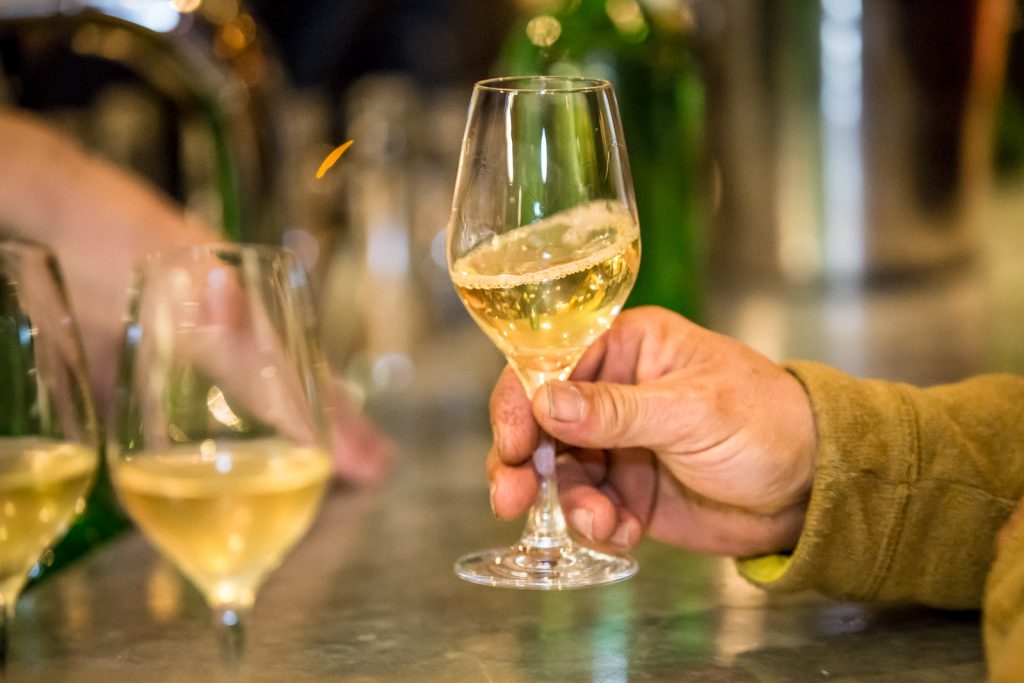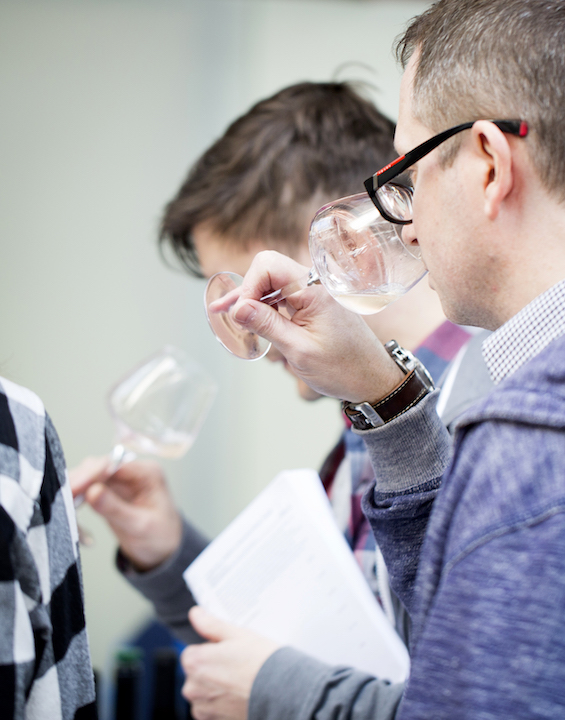Here is a lexicon of definitions of key wine words. The definitions are not intended to be scientifically objective and, in many cases, will be somewhat simplistic. Some will describe the technical side of wine(s), others will examine the more abstract and aesthetic ideas behind wine.
To view Doug Wregg’s Real Alternative Wine Glossary, starting with the As, click here.

Acidity. Usually measured in grams of tartaric acidity. Acidity is a natural component of grape juice, but tends to drop when the grapes ripen. Finding the natural balance between acidity, fruit/sugar and alcohol in the wine is the sign of hands-on work in the vineyard. Acidity provides a spine for the wine, a linear dimension, if you will. In certain grapes from certain climates, it is often a defining characteristic. Acidity is a function rather than a flavour, although it may express itself in citric fruit notes; it may be crisp or refreshing or soft or rounded. High or low, it should not feel other than that it is part of the wine. Acidity is often added by winemakers in hot climates or in hot vintages to “correct” the balance of the wine. Descriptors of acidity in wine range from enamel-removing, eye-watering, tart, firm, brisk, crisp to round, soft and flabby.
Additives/Additions. The definition of wine as fermented grape juice ignores the number of interventions, manipulations and additions that can alter and reshape the wine. Sulphur dioxide may be used on numerous occasions and for various reasons– at harvest, in the tank or barrels, after fermentation, after racking and before bottling. Yeasts and enzymes may be added to ensure a stable primary fermentation. Other chemical agents will also come into consideration. The colour, clarity, acid, alcohol, tannin, mouthfeel and texture of the wine may all be controlled and changed with an array of different chemical products. Such additives are needed (argue the oenologists) to make a wine clean, consistent, clinically correct and commercially palatable (wherein a common denominator of correctness and cleanness is the preferred option). Such additions are anathema to natural winemakers who view their necessity as a deficiency in the grapes and the quality of the farming.
Aeration. The process of encouraging a wine to absorb oxygen is also called breathing. Simply removing the cork out of a bottle may not allow for sufficient air contact; decanting or even swirling the wine in a glass are preferred methods. The objective is to allow the wine to open up and develop, releasing its aromas into the air. The conventional wisdom is that ten to 30 minutes of aeration can help open tight young red wines that are meant to age. Some wines can also develop off odours or a bottle stink that blows off with a few minutes of aeration. Since older (15-plus years) red wines are more delicate and can lose their fruit during aeration, aeration is not recommended; the wines can evolve quite quickly in the glass. Aeration is also preferable for skin contact wines, white wines aged under the lees and naturally reductive wine. See also decanting.
Altitude. In some countries vines naturally grow at high altitudes: Argentina (Mendoza); Spain – Sierra de Gredos and Murcia; Sicily (Etna) and Valle d’Aosta are notable examples where vines may be found over 1,000 metres above sea level. Whilst such altitude has an influence on the vines, how the vines thrive depends more on the diurnal temperature range, exposition, rockiness, light, rainfall and so forth. It is not, therefore, correct to assume that wines that come from high altitude vines will be cool climate in nature.
Amber. Used interchangeably with orange, a term coined to describe the colour of skin-macerated wines. Maceration, which can be for a variable length of time and further accentuated by oxidation (and according to the colour of the skin of the grape), can yield wines with an astonishing array of colours from golden-yellow, to pinkish-orange, to copper to amber – and every shade in between. During the maceration, the wine picks up other properties, particularly phenolics and tannins and attains a unique textural complexity. As detailed in Simon Woolf’s The Amber Revolution, the range of amber wines is spectacular and the process of skin-c0ntact winemaking, formerly practised mainly in Georgia and Central-Eastern Europe, has spread throughout the wine world.
Ambient. Refers to the temperature of a fermentation or the localised population of yeasts in the vineyard and/or winery. Fermentations can be controlled in a variety of ways; an ambient ferment (which is usually a fermentation done with native yeast strains) takes place at its own pace. As it is a result it may be a more complex and even a more elongated procedure.
Amphora. A generic term referring to the clay pots that wine is fermented and matured in. Traditional amphorae were slender, had handles to transport the contents. The pots themselves may be made according to local methods and local clay and will be shaped accordingly. The Georgian qvevri is one notable example, being a large terracotta vessel lined with beeswax, buried underground and never moved after that. The Spanish have their tinajas, in Italy a rounder pot called Dolia can be found. Such pots are not used for transportation. The properties of clay are many. Like wood it allows for a micro-oxygenation of the must through its pores; the material has an antiseptic quality and the clay keeps the liquid at an ambient temperature. Cleaning and general hygiene is very important, but well-made clay vessels, properly looked after, can give over one hundred years of winemaking service. It has been argued that amphora-made wine has a taste-signature, and leaves an imprint on the wine (in the way that oak does).

Ancestral. A method of making sparkling wine called Ancestral Method, also artisanale or rurale in France. The alcoholic fermentation is done naturally with native yeasts in tank or barrel. Before it completes, the must is transferred into the bottle. The latent sugar in the juice allied to the active yeasts and further malolactic creates the carbonic dioxide which is sealed under the closure. There is no dosage and often no disgorgement. In Italy, there is a version that sits between ancestral and traditional method, wherein the some of the sweet must of the wine is added to the fermented must to restart the second fermentation. Ancestral method wines will be very lightly or moderately sparkling. Nowadays, the term is synonymous with Pet Nat wines.
Appellation. Whilst appellation may have been set up with the best of intentions, it became – in certain places – bureaucratic, and at times arrogantly inflexible. Originally, appellations were established to institute standards such as grape yields per vintage, permitted grape varieties for the region, degree of ripeness, minimum abv and so forth. Now, it seeks to impose a kind of conformity, which means that farmers who use traditional farming techniques, winemaking methods and even ancient grape varieties can be disqualified by the judging panels. Various of our growers have fallen foul of a system that claims to uphold standards and defend wine heritage yet turns out to be the standard bearer for vested interests and the driver of conformity. Appellation, if it is to have any value, must change and change inevitably puts noses out of joint.
Appreciation. Wine appreciation takes many forms. Drinking may be a solitary activity, a gastronomic one, or the wine can be tasted and judged on the basis of certain so-called objective criteria. Although wine criticism dates back hundreds of years (now is the time to reference Pliny the Elder), there is now an industry of appending scores to wines, which has the result increasing their perceived value to prospective collectors and purchasers. For many of us, appreciation is an aesthetic and emotional response to a wine, an admiration of its complexity, and an awe at the effort that went into making it, from the quality of farming that produced the grapes, to the quality of the winemaking that fashioned these grapes into something beautiful and delicious.
Arc. Not a vessel to store two of each of your favourite wines in case of a cataclysmic flood, but the period over which a wine develops, improves and hits a peak, then a plateau and then slowly drops away. Many wines are meant to be drunk with a year of the vintage and their arc is more of a flat line, others describe different trajectories like wave patterns and open up and close down – often depending on the day. (This may have to do with the relative reductive and oxidative properties that many wines contain).

Aroma/Aromatic. Aromas are broadly divided into primary and secondary (and occasionally tertiary). The primary aroma is usually the first smell one perceives from the wine in the glass. This aroma is often linked to a perception of the varietal and is expressed in fruit character. Fruit character does not just mean fruits per se, but however that primary character can be described. Secondary aromas may derive from, for example, oak, and other intrinsic elements that shape the wine, whereas yet subsequent aromas may be to do with the development of the wine in the glass as it reacts to oxygen.
Aromatic grapes have a definitive primary varietal signature that seems to leap out of the glass. Gewürztraminer, Riesling, Sauvignon, Muscat, Torrontes, Malvasia are some of the more obvious examples.
Artisan. A feel-good term that reminds us that wine can be small-scale and made by individuals or families, from grapes grown with love and fermented with care and attention. The idea is that wine is a seasonal journey that one undertakes, and that wine is a series of physical, chemical and microbiological transformations that takes place with a human face. Artisan producers are essentially vine growers who make the wine (as opposed to separating vineyard management and oenology into two discrete disciplines) and the wine in question is an expression of their personality and the result of a thousand different decisions taken, and as well as their singular interpretation of the vineyard and the vintage.
Autochthonous. Grape varieties that are traditional or native to a certain region. This is a relative concept, as throughout history, varieties have been introduced by travellers or merchants in such a way that one can’t really say that the grapes are original to the region. Autochthonous grapes tend to specific to an area, as opposed to international varieties which may be found in many countries and regions. The grapes can be a singular variety, or found co-planted in field blends. The positive side of autochthonous is that varieties are rooted in a culture and give a sense of place; having been farmed for centuries they have integrated into the very fabric of the wine region and become a signature of that region. They represent diversity in a world of homogeneity, branding and easy recognition. Many such varieties have been uprooted in favour of more commercial options, and of the thousands of grape varieties that one once would have found, only a relatively few are now being farmed with wines actually commercialised from them.

